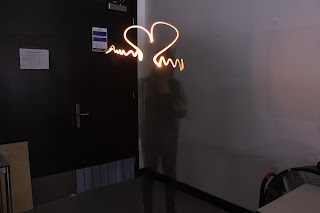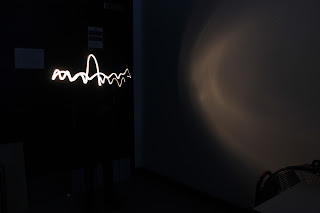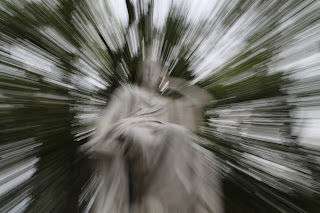Multi Camera – TST Evaluation
In James lessons we had been taught about Multi-Camera and
Single Camera production and how it works. For one lesson he gave us a chance
to have some hands on experience practicing how to produce something in a
Multi-Camera set. This helped us to grasp the idea and the differences between
this and Single Camera production which we are used to. Multi-Camera production
is working on a set with multiple cameras filming at the same time. This
technique would usually be used for live TV shows or Soaps for example Eastenders
which is based on a designed set.
We were then assigned as a group to produce a Multi-camera
Magazine show which would include the inserts we had created previously. We
were then assigned roles by our producer Pierre. I was assigned the role of one
of the main camera operators. My role was to operate the camera on the left end
of the set. I had to produce wide shots and close-ups of whatever object the
producers were talking about, medium shots of whatever guest came on sitting on
the single moving chair, medium shots of when there was just one presenter
sitting on the sofa so that there wasn’t a lot of wasted space in the shot and
when our guest demonstrates her makeup strategy on Tyler.
All camera operators had to wear a headset that was
connected to the booth where we could communicate with the Producers, Director
and Visual Mixers. This was very useful; it allowed the director to “direct” us
on whatever shots he wanted to see. This also made us feel very professional and
important and this gave us a feel of how a real set would be directed. We also
worked alongside the Floor Manager (Danny) whose job was to make sure that everything
on the set ran smoothly and setting up camera equipment and dealing with
wires/cables.
Mahan our director produced our camera script which was used
as guidance to what shots we were meant to follow and when they were meant to
happen. Unfortunately the camera script was only presented to us on the day of the
live show which made our roles very stressful and unorganized. In the end the
camera script wasn’t even used because the whole production was unorganized and
instead the director instructed us with directions on and offset through our
headsets.
I think I played my role very well and took every advice and
direction from my director assertively and efficiently. At first I thought the
role of a camera operator would be very difficult because without the camera
operators there is no how, but to my surprise it was quite easy and pretty
simple. My previous camera skills made it quite clear that I was appointed the
role of a camera operator correctly.
I also produced a short story which was played after the
opening credits at the start of the show. This insert was inspired by the film ‘Shaun
of the Dead’. The main concept of it was to enhance the Halloween theme and
involve the Presenters so that it could smoothly run into the start of the
show. The clip illustrated a zombie chase with one of our Presenters Doran
being chased by a mob of zombies. Then when he is caught by the zombies he
comically stops and answers his phone; on the other line it is Mahan the
producers calling to ask where Doran is and to get to the set immediately so
that they can start the show. The clip was filmed in an underground old
abandoned subway across the road from college which was really dark and grim
which was a great location to film the whole clip.
Doran invited his friend who is a horror makeup artist to do
the makeup of all the people participating as zombies. The make was at a professional
standard and it looked so realistic and scary. Everyone looked like serious
zombies! We got down to the subway and filmed all the footage within an hour.
The camera operators were I and Sammy, the rest as zombies. Within the same day
I and Mahan edited the footage so that it could be ready for the live show
which was the next day.
I generally think that things could have run smoother for us
if we all collectively worked as a group, also taking direction from the
appropriate roles and working fast and efficiently. However the show in general
turned out okay despite a few difficulties, but we got it done and that was the
important thing.
If I could do things better I would have made sure that I
was in every day ‘on time’. Also I would have filmed the Horror Insert a lot
sooner instead of it being filmed carelessly the day before.
I have learned a lot from this experience about the Media
industry and myself as a person. This was a challenging but useful experience.





















